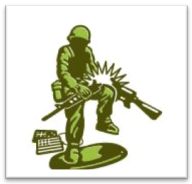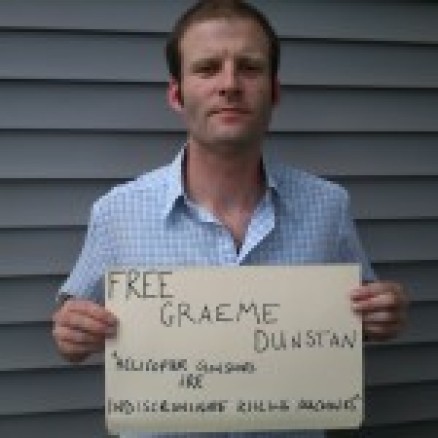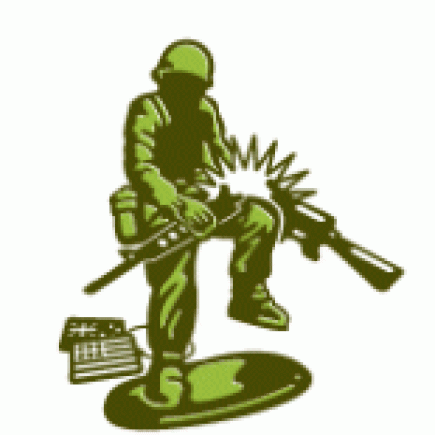 I visited Kabul in December as part of an international delegation to meet with community groups and ordinary people, to learn about the impacts of the war and about local peace-building efforts. Kabul, Afghanistan’s capital, is considered the most corrupt city in the world, and one of the most polluted. Afghanistan also has the highest number of internal refugees in the world. In the last decade, millions of refugees have arrived in Kabul from rural provinces, escaping the violence and poverty of the war.
I visited Kabul in December as part of an international delegation to meet with community groups and ordinary people, to learn about the impacts of the war and about local peace-building efforts. Kabul, Afghanistan’s capital, is considered the most corrupt city in the world, and one of the most polluted. Afghanistan also has the highest number of internal refugees in the world. In the last decade, millions of refugees have arrived in Kabul from rural provinces, escaping the violence and poverty of the war.
We drove to a refugee camp in the outskirts of the city and crowded on the floor of a UNICEF tent. Assisted by a translator, we had a meeting with the head of the camp and some of the residents. About 55 families of around 7 people live in the camp, after escaping southern provinces. We also visited another refugee camp, a drug rehabilitation centre, parliamentarians, aid and development organisations, women’s groups, a community run school and a local journalist.
We had daily meals and discussions with the Afghan Youth Peace Volunteers, who had invited our delegation to support the launch of their petition on Dec 10, International Human Rights Day, for a ceasefire from all armed groups. Some well known folk came to support the Peace Volunteers, including authors and activists Shane Claiborne and Fr. John Dear, former US diplomat Ann Wright, and Nobel Laureate Mairead Maguire from Ireland. The petition was delivered to the UN. The Peace Volunteers aim to gather at least 2 million signatures, for the 2 million Afghans who have died in wars in the last 40 years. Please consider joining the petition at 2millionfriends.org
The Afghan Youth Peace Volunteers are a mixed ethnic group of Afghans, mostly students, who are living together and studying nonviolence. They are committed to non-military solutions to the war, and they are building friendships between people from different backgrounds and different sides of the conflict as a way to work towards peace.
One of the things they do is a monthly public skype call with people from around the world. They want to be friends and they want to live without war. They say we are all connected to each other by one blue sky.
As well as creating a culture of peace, they are also doing grassroots work to educate youth and create employment in their neighborhood.
We spoke to a lot of people about what it’s like to live in Afghanistan, and how the war affects ordinary people. People said things like “The Americans being here is giving Afghans an excuse to kill other Afghans.” Some said that things are worse than 11 years ago, some said things were better, and many said that things had not changed. We asked a lot of people what would it take to bring peace to Afghanistan. It is hard to answer because violence has been a part of life for as long as most people remember. Bringing peace means a lot more than ISAF forces leaving or defeating the Taliban. There are foreign invasions, ethnic and religious and cultural differences, but violence is also a part of the poverty. Employment needs to be addressed. Violence against women needs to be addressed. Social conditions and living conditions need to be addressed. One wonders how there could be peace with so many wanting for the most basic of needs for themselves and their families.
As an outsider, I don’t have answers. But the Afghans we spoke to suggested many ways forward. Education barely exists there. Even with the US claims of schools opening, we were told that often teachers will just sign in and leave to work another job, returning to sign out and collect their pay, because they can’t support themselves on a teacher’s wage. People there, especially children and women, need education. Teachers need to be paid and trained properly. Many children do not go to school because they have to work to survive. Many more are not allowed by conservative families to attend schools.
The women, those confident enough to speak to us, told us of the daily struggles of women there, and the pain of the war. One woman told how she lost her husband to the violence and now she cries every day. Women spoke about difficulties in their homes, especially financial trouble if their husbands were dead, unable to work, or if their husbands had second wives. It’s very difficult for women to learn income-generating skills, but even if they do, as women in this society it’s very difficult to sell things. Women are not very able to participate in public life. Some women we met with told us they were afraid that if their husbands knew they were meeting to speak with other men, they may divorce them. And if people knew they were meeting with foreigners, they could be beaten or killed. We met with a group of women who were meeting to learn sewing skills, and were making duvets for the winter. Unlike many skills programs for women in Afghanistan, this group of women were not paid to learn. They were only making money from what they produced. Discussions were taking place about forming a workers cooperative.
The social benefits of a women’s workers cooperative could reach far beyond employment. Such a group would be able to educate and upskill other women. It would be a valuable meeting place for women, and could likely lead to other kinds of support. Women told us they would rather be at home with their children, but it was necessary to learn skills with the hope of making a modest living for their families.
Corruption needs to be addressed. People told us that most of the aid money sent from foreign countries is never even seen by the people. People still starve and freeze and school children still sit on the floor. One of the men we met with had worked with the Taliban before realising it was achieving nothing for the people. He told us that old men like him, with white beards, were responsible for the corruption in society, and it is up to the young people to get educated and bring change. He said that all foreign powers need to leave for peace to come, adding that they are only there for power and money. He said Afghans need to organise and bring the changes themselves, and to not depend on foreign assistance. He added that it’s necessary when analysing the influence of foreign powers there, to look at where are guns coming from and where is money coming from that local criminal groups are using. Afghans know that foreign countries are only involved when it serves their own interests.
People we spoke to were overwhelmingly unsupportive of the Taliban’s involvement and of foreign involvement in Afghanistan. People generally thought that ISAF being there made things worse, but ISAF leaving suddenly would make things worse too. A woman told us that the US was responsible for destabilising the region, and for creating some of the social problems, and the US will now be responsible if there are massacres and human rights abuses after they leave.
The security situation is still so far from stable, even 11 years into the occupation. Earlier in 2012, Kabul had been the site of the fiercest resistance since the invasion, with people firing rifles and rockets at parliament and the battles lasting for most of a day. When we visited the parliament we were quickly taken behind concrete barricades and razorwire and searched for weapons.
In the week we were there, Afghanistan had a suicide bombing targeting an Afghan intelligence official; a car bombing that killed a police chief; a shooting assassination of a woman who headed a regional women’s affairs department; a US soldier killed, and an armed hostage rescue.
The ISAF is in the process of a security handover to the Afghan National Army, but Afghan police and soldiers keep killing ISAF troops in green-on-blue attacks. Mainstream media reports this as Taliban infiltration. But it may just be that they don’t want our military occupation. Afghans told us; “Armies can’t bring peace here. It’s been tried. Things are still just as bad as they were before.”
Many people are terrified of what will happen after ISAF troops leave. The US have now said they may leave up to 9000 troops in Afghanistan after 2014, in addition to special forces and drones. Iran or India may or may not support Afghanistan with troops, but the sudden absence of the US centralised command and Air Force will leave the country in a precariously unstable situation. It remains to be seen whether we will see the private security industry boom in Afghanistan after the withdrawal, working both for foreign corporate and strategic interests and for local warlords and drug traffickers, as the international community averts its attention.
While the Gillard government plans to withdraw troops by 2014, our troops were only token support. The SAS are not withdrawing, and neither is our intelligence support – and these are our real contributions to the war.
Australian SAS operate throughout Afghanistan’s rural provinces, mostly in the south where armed resistance has been strongest. In coordination with British, US and other countries’ special forces, they forcibly enter homes in the early hours of the morning, guns drawn, balaclavas on. They meet any resistance with lethal force, round up the residents of the home and capture suspected insurgents. During these “night raids”, any young man with a turban on his head is considered a potential enemy. Captives are handed over to the US for interrogation and many moved into secret US prisons for torture and further interrogation.
The Afghan journalist we met with, who specialised in covering Afghan war victims, told us that the intelligence of the US is not very good, and the intelligence sharing between ISAF and local government is also not very good. Consequently, a lot of civilians are killed in these raids.
Australia also provides intelligence and training support for the US. We now host bi-yearly US training exercises across all states, and have a permanent US marine base in Darwin. Our satellite interception facility at Pine Gap feeds all data straight back to the NSA, and is implicated in targeting for the CIAs extraordinary rendition and torture of people without trial from Middle Eastern and Northern African states, as well as drone targeting in Afghanistan, Pakistan and Yemen. Drones are remote controlled aircraft that the US are increasingly using to fire missiles into peoples homes. Because these drone attacks are remotely controlled and premeditated, and are known to almost always kill and injure civilians, they are a war crime in which Australia is complicit.
Culley Palmer is a lifelong dedicated peace, social justice and earth justice activist.






























Leave a comment